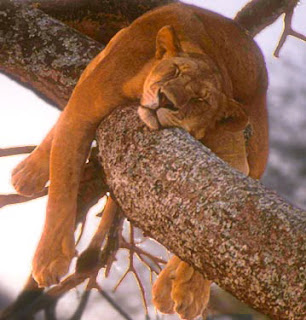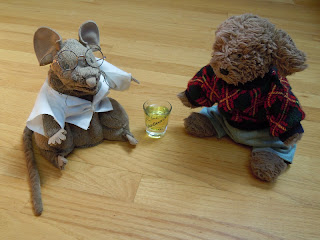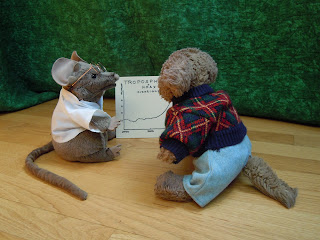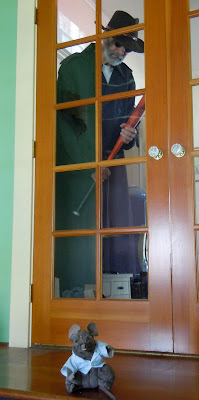It has been a weird spring. March came in like a lion, on schedule, and by March 3rd, it had draped itself languidly across a tree limb without enough gumption to take down a three-legged hyena. Across two-thirds of the country, people were startled by the tinkling sound of falling records. An unprecedented heat wave presided over the Midwest. Snowplows in Minnesota were hard pressed to keep up with the drifts of cherry blossoms. Over seven thousand high-temperature records were smithereened by an average of fifteen degrees, and as much as 35. Meanwhile, here in western Oregon, all the remaining water in the world fell during March, except for the portion that’s still up there because it couldn’t make it through all the clouds.
Reaction to the arrival of summer in March was generally positive, but unsettled, with some suspecting it should be intercepted and gently guided back to June before it gets too far away. Meteorologist Martin Hoerling of the NOAA investigated the phenomenon and reassured the public that it was a result of freak chance and not indicative of global warming. In fact, he explained carefully, the heat wave was caused by warm air. Warm air is quite often responsible for higher temperatures (says he), and the only thing unusual about this event was its size and duration, which he was at a loss to explain, except to call it a once-in-a-century event. And if it happens again next year, we should be sitting pretty until 2212.
This analysis was well received in the Rogue Science Incubator, located at the edge of the parking lot of (but not affiliated with) the Petroleum Institute. The RSI is proud of its role in gainfully employing dozens of people with science degrees and massive personal debt. Chief Obfuscologist Willy Crack was kind enough to take our questions. RSI headquarters was small but lavishly appointed; trays of complimentary donuts alternated with pots of money, a bartender was busy at the back wall, and in the corner, the small rescue penguin, Anomaly, fanned herself with the refrigerator door.
Dr. Crack endorsed the NOAA explanation. “The only point on which we differ,” he said, “is in the characterization of events as a ‘freak occurrence.’ A freak occurrence, by definition, is something out of the ordinary. When they happen all the time, the number of freak occurrences naturally goes way down. It’s a feedback loop.”
What about that freakishly early deadly tornado season?
“Pish. I should not have to remind you that a thundering majority of Midwesterners were not hurled into the air. As I have demonstrated, there are natural feedback loops operating that will invariably keep things as they have always been, which is what we want. For instance, in the example last month, the effects of the warm air were countered when 200,000,000 white people suddenly stripped to their skivvies and lounged on aluminum chairs, reflecting sunlight back into space.”
Dr. Crack hobbled over to a display board. “Come this way. We have some charts that might help clear things up for you.”
Is that the troposphere one? Because respected climatologists have long since debunked the claim that the troposphere temperature disproves global warming.
“I know that,” he said peevishly. “But nobody listens to them. No: this is a chart of the number of times articles with the phrase ‘troposphere disproves global warming’ have appeared on the internet. As you can see, it’s trending sharply up. And over here,” he said, turning to a new chart and now limping badly, “we have even more conclusive proof that man-caused climate change is a hoax.” A large dark figure in a trench coat with a barely concealed baseball bat appeared in a doorway.
That’s just an estimate of the amount of coal and petroleum still in the ground. Say, are you in pain?
“It’s nothing. I am in pain, yes, but as you can clearly see, it’s caused by this tibia bone protruding through my leg. Completely natural,” he said.
The dark figure withdrew.




I have long wondered how "coinkydink" was spelled. Thank you for clearing this up for me. Murr, you have hit the nail on the head with this one. I think I recognize the guy in the trenchcoat, but then again, maybe not.
Thank you for making me laugh at something that isn't funny at all. How DO you do it? Born that way, I guess. 🙂
Whatever I'm accused of, I plan to say I was born that way.
You nailed it again. The global-warming-denialist scam is exactly like past decades' tobacco-company-sponsored fake "research" proving that smoking was harmless — except that this time, even those of us who aren't fooled will eventually suffer.
Seriously, Inf, what nutcase gave us custody of this here planet anyway? Should have his or her thunderbolts revoked.
Years ago I saw a science-fiction movie about aliens who were trying to wipe out humanity by artificially accelerating global warming, so they could seize the Earth for themselves after we were gone. At the end of the movie one of the aliens says, "We're just doing in ten years what you would have done to yourselves anyway in a hundred. If you can't take any better care of your planet than this, you don't deserve to keep it."
Snortworthy, indeed! Especially wonderful line about the exposed white flesh reflecting the sun …And LAWDY you must have such fun setting up the pictures for your post!!!
If I'm ever stumped for a subject, I was thinking of doing a post on the various photos we've set up for this blog. When you don't know how to do Photoshop you have to dig deep. I guess it's sort of quaint, like me.
And did the photo of the lion in winter come before the metaphor or did the metaphor come first? I think I know. A compliant lion in winter is a rare beastie.
But a compliant lion in Google is a dime a dozen.
One good thing to come out of all of this… soon tall dark men with baseball bats will no longer be wearing trench coats. It'll be to blasted HOT!
That's a good thing? Do we really want to know what's under those trenchcoats?
Well, warm air does tend to carry heat. I find that explanation as plausible and full of entertainment as any out there.
Sooner or later one of these dudes will explain that it's not the heat, it's the humidity. I grew up in the D.C. area and if we're going to suffer from global humidifying I might as well go into a cave and drink myself dead with a few dozen good IPAs right now.
Ha! I, too, do not recaLL ever seeing coinkydink ever speLLed before, what a coincidence!
The stars are aligned! Start a religion!
Another post of reliable sanity… Thank you and LOL.
"Reliable sanity." I am honored, my dear.
I think so many more people would respond to the concept of Global Warming if the scientists had come up with another phrase for it, such as Climate Change. Excessive rain and cold ARE the result of Global Warming but this is a hard sell for those unable to think abstractly. Anyone who has recently flown over Greenland knows the truth.
Unfortunately, anyone who has flown over Greenland has contributed to the problem. As have I, who just got off the jet plane and am fighting slow motel wireless to respond to you right now in West Virginia. I have heard it called "global weirding…"
Oh yeah, Most scientists made the switch to the more accurate "climate change" a while back. But "global warming" still gets lots of play.
Global weirding IS nicely accurate…
Definitely snortworthy! And that's no coinkydink! 😉
Yes ma'am, that is by design.
BTW Murr … just wanted to tell ya that I watched your YouTube video and a late congratulation's to ya! : )
I did some posting's on the USPS as well (inspired partly by Bernie Sanders), I know a fella here in Dallas who is a carrier … and the corporate power entities are trying to take that over as well and privatize it … Geeeezz
Word. Anyone who's paying attention knows that privatization is the name of the game, all over. More ways to get what should be a public service into private profiteering hands. It's bad enough with the USPS (and it's really true that most people don't use it anymore). Worse when it comes to providing water. Anyone within shouting distance of Murrmurrs should stop and think before buying another bottle of water.
BTW Murr … just wanted to tell ya that I watched your YouTube video and a late congratulation's to ya! : )
I did some posting's on the USPS as well (inspired partly by Bernie Sanders), I know a fella here in Dallas who is a carrier … and the corporate power entities are trying to take that over as well and privatize it … Geeeezz
I think we've had five "hundred year floods" in the last twenty years or so. In Northern Minnesota I would have to agree with the premise of reflecting sunlight with our bodies. Mr. Clean would be envious of that much whiteness. Heck, people squint when I take off my hat.
Please put your hat back on. I can't see the screen.
The National Climate Change science lobby has refused to accept my academic paper conclusively linking the increase in tornado activity in the Mid-West to the increase in mobile home parks. Anyone watching the nightly news and with an ounce of gumption can clearly state that trailer parks ATTRACT tornadoes. God how I love science!!
Me too! Maybe if you submitted it in crayon?
And also it must be noted that all of those tornadoes are caused by those stupid Brits driving on the wrong side of the road. It creates that swirl which evolves into tornadoes over here. Haven't you heard of the Butterfly Effect…or something like that?
I thought that just got the toilets to flush.
Too funny… I'm snorting all over. And here's a news flash- did you know that in
South America the swirling goes the other way? Prob'ly a commie plot, right?
Sugar, I'm so happy when everything goes down, I don't care what route it takes.
Oh, wow, you mean I'm not the only blogger who doesn't know how to use Photoshop? Where does everybody find it, anyway?
If they've got Hipstamatic to make all our new photographs look like badly degraded old photographs, I can't help but think we're in the vanguard of new old bloggers.
Global Warming is so yesterday. It's now officially sanctified and PC correctly 'Climate Change'. We haven't seen much of it in these parts. Mainly just too cool (not warm) and too wet (not drought like)
I thought we were hogging all the water. Which beats the alternative. See Stephen Hayes' comment, above–suggests that Climate Change isn't a PC thing, but a less deniable thing.
Another term to use: "Global Weirding." It's a pretty accurte term for the weather pattern changes and freaky weather happening over the globe. Even the deniers have to admit that something strange has been going on.
Yeah, yeah…everybody TALKS about the weather, but nobody DOES anything about it…..*mumble, mumble, grouse* And West Virginia…why??
Almost heaven! Which isn't preventing big coal from blowing it all up…I'm going to a birding festival.
You are a peerless source of dark laughter. "The small rescue penguin, Anomaly" deserves her own book. Soon we'll be able to assign individual names to the remaining animals, but forced to number the hurricanes.
Speaking of dark laughter!
Personally, I think that "Climate Change" is yet another sign of rampant Corporate Greed. Haven't you noticed how all the department stores never keep "this season's" clothes in stock through the entire season? Have you ever tried to buy a bathing suit after July 4th? If you did, you'd find the shelves stocked with Fall and Back To School clothes with nary a sandal or a tank top to be found! It's all part of the plot, I tell ya! Maybe the seasons are starting to believe it and are adjusting themselves to what's in stores now…Elaine M.
Actually, I'm going to try to get through the rest of my life without needing a lawyer or having to try on a swim suit in any season.
Anomaly and I react to heat in much the same way. I am however jealous that on this occasion she was close to your brilliance. It may not have helped her – but genius comes at a cost.
Everyone looks bright by the refrigerator light.
And THAT's an entire country song.
Sweet name that, Anomaly. JMartin's right about the book–or give her to the guys who write "What on Earth," the online climate change cartoon series by "Science Friday." She'd fit right in with the animal crew.
I'm glad more than one of you liked little Anomaly.
Murr, you are dynamite. I was going to write something witty, but honestly, this whole thing just wears me down. We talk, talk, talk, and we write, write, write. But the bucks just keep chasing after the culprits. We have to stop supporting the causes and so far, we have been unwilling to do that.
Most of us will not change our habits until we can't afford them anymore. If things cost what they REALLY cost, I think we'd start seeing a different world.
The moral is enough money can prostitute even those in proffesions suposedly dedicated to the truth
I'm afraid I've seen that in my own life. Now I'm pure, of course, because nobody's offering me any money.
Jeepers! I read this for the first time a little too early in the morning and thought snotworthy was a little weird. Wasn't till I got to the comments that I figured it out. And my inadvertent humor wasn't remotely the biggest laugh I got out of the piece. Drinking anything is clearly contraindicated when reading this blog as limeaide drips off my nose and burns naive mucosa.
I now want to name something "Naive Mucosa." I want to bad.